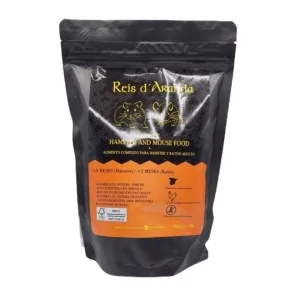The Tornjak originated from genetically homogeneous, almost extinct, indigenous shepherd dogs. These dogs have...
DO HAMSTERS HIBERNATE?
INTRODUCTION
Some hamster owners have found that their pets have been flaccid and cold, with breathing too soft and this coincided with winter times or colder than it should be. This may be a case of hypothermia (false hibernation) and it is essential that we act in time.
WHAT IS HIBERNATION?
Hibernation is the state of lethargy into which some animals sink during the winter months. During hibernation, the metabolism of these animals decreases to a very low level and their body temperature and respiratory rate are lower than normal. During this period they use the energy reserves stored in their bodies during the warmer months. This phenomenon, at its highest degree, is characteristic of homeothermic (warm-blooded) animals such as brown bears, but similar changes have also been observed in cold-blooded (poikilothermic) animals such as ladybirds. Not all animals use the same method to hibernate; this depends on their blood type and other characteristics.
Hibernation is one of the great enigmas of the animal world. It is more than just a deep sleep. The animal's heartbeat and breathing slows, and digestion virtually stops. By the onset of winter, the animal must have increased its lipid reserves, which are gradually consumed to supply the body's energy needs during what can be likened to a long sleep.
Hibernation in humans has been proposed as a solution to long periods of time in space travel to the stars. Many science fiction works and films include it.
DOES THE HOUSE HAMSTER HIBERNATE?
No, unlike wild hamsters, domestic hamsters do not have the ability to hibernate, but when certain temperatures become too low for them, the cold begins to affect their bodies and we reach a point called ‘hypothermia’.
Hypothermia is a condition in which the animal's body temperature falls below normal levels, which can result in a number of serious complications if not treated properly and in a timely manner.
The causes of hypothermia can be diverse and include:
- EXPOSURE TO TOO LOW TEMPERATURES: As a result of staying outside for prolonged periods in cold weather conditions.
- INJURY OR ILLNESS: Severe trauma, shock, metabolic diseases, poisoning.
- ANAESTHESIA: During surgical procedures, especially in small or geriatric animals.
Very young or elderly animals are more susceptible to anaesthesia. Severe hypothermia can lead to various complications: cerebral oedema, pulmonary oedema, pneumonia, pancreatitis, hypotension and death.
HOW TO PREVENT HYPOTHERMIA IN MY HAMSTER
We can prevent hypothermia in our hamster by offering it large quantities of shredded paper to make nests and tunnels, shredded paper helps to maintain body temperature, as does hay (not straw). It is essential that we avoid direct draughts to our hamster's habitat and that it gets wet, we will also have to control the temperature of the room where our hamster's habitat is located and, in the case of a very cold house or area, put a portable heating machine to help regulate the temperature (without overdoing it).
Leave a comment
Log in to post comments
















